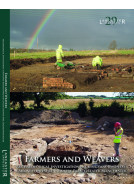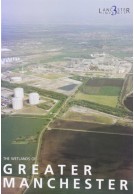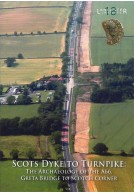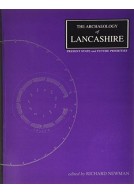Google Books previews are unavailable because you have chosen to turn off third party cookies for enhanced content. Visit our cookies page to review your cookie settings.
St Michael's Church, Workington (Paperback)
Excavation of an Early Medieval Cemetery
Imprint: Oxford Archaeology North
Series: Lancaster Imprints
Pages: 170
Illustrations: 129 colour images
ISBN: 9781907686313
Published: 31st August 2019
Script Academic & Professional
Series: Lancaster Imprints
Pages: 170
Illustrations: 129 colour images
ISBN: 9781907686313
Published: 31st August 2019
Script Academic & Professional
You'll be £20.00 closer to your next £10.00 credit when you purchase St Michael's Church, Workington. What's this?
+£4.99 UK Delivery or free UK delivery if order is over £40
(click here for international delivery rates)
Need a currency converter? Check XE.com for live rates
(click here for international delivery rates)
Need a currency converter? Check XE.com for live rates
In September 1994, the parish church of St Michael, Workington, was badly damaged by fire, reducing the interior to a shell. The church’s history extends back to at least the twelfth century, and an existing collection of eighth- to eleventh-century sculpture hinted at more ancient origins. Therefore, before reconstruction began, a programme of archaeological works was undertaken, yielding further, highly significant, evidence for an early medieval Christian presence on the site, including fragments of sculpture and a large number of burials, as well as information on the later medieval and post-medieval churches, and their associated cemetery.The project has provided a rare opportunity to study the origins of one of the earliest, and long-lived, early medieval Christian cemeteries in North-west England. The work focused upon the evidence for pre-Norman ecclesiastical activity and the earliest phases of the medieval parish church, together with the skeletal remains, and artefacts. It also provided an opportunity to conduct a series of scientific investigations on the material, since bone rarely survives in Cumbria, This included radiocarbon dating, isotope analysis, and osteological analysis, providing the earliest radiocarbon dates from such a cemetery in Cumbria, indeed in the North, and two clear phases of burial, the second, closely dated to the eleventh century, containing evidence of a particularly gruesome end for one of the interred. The large collection of mid-tenth- to early eleventh-century sculpture, decorated with Scandinavian-derived motifs and interlace, and items of personal dress and jewellery, indicated the evolving tastes of the patrons.This has allowed a better understanding of the lives of this community, and their changing burial traditions. Perhaps most importantly, the site provided an opportunity to marry the patchy historical framework of the region with archaeological evidence, providing information for how people responded to the changing tastes, politics, and events within the landscape of the North West in the early medieval period.
Other titles in the series...
Other titles in Oxford Archaeology North...





















